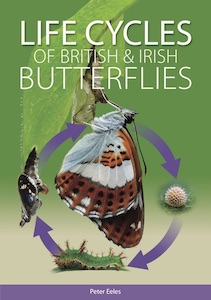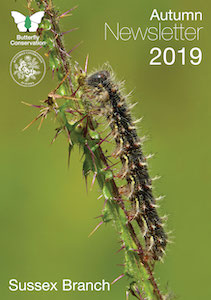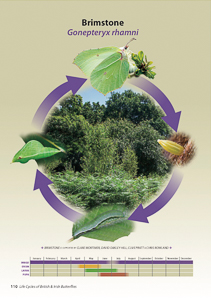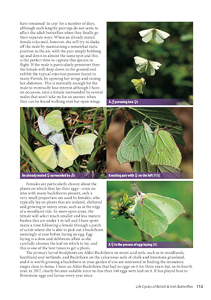 |
by Peter Eeles
With detailed descriptions and photos of the adult, egg, caterpillar and chrysalis of each species, this book provides unique insights into a hidden world, illustrated with over 1,300 high-quality colour photos that reveal the subtle beauty in something as small as a butterfly egg. While aimed at the typical butterfly enthusiast, the book's content has been successfully tested by conservation scientists who need to record all stages when measuring the impact of habitat management and climate change. The book also includes recent discoveries that are documented here for the first time. Butterflies are infinitely fascinating. What may start as a simple hobby of photographing the adult insects can evolve into a deep interest in their immature stages, ecology and conservation and this book will help light your way.
This review was originally published in the 2019 autumn newsletter of the Sussex branch of Butterfly Conservation.
 |
Over the centuries there have been some classic books which have tackled the subject of Britain's butterflies. F.W. Frohawk's Natural History of British Butterflies (1924), The Butterflies of Britain and Ireland (Thomas & Lewington, 1991) and, of course, The Butterflies of Sussex (Blencowe & Hulme, 2017). And now there is another essential book that you need to add to your library of lepidopteral literature.
Because, while there are plenty of books on the market focusing on butterfly identification, we have not had a worthwhile book solely dedicated to the life cycles of our butterflies for 95 years. The author of that two-volume tome in 1924 was Frederick William Frohawk (1861-1946), a Norfolk born naturalist and illustrator (who, alongside his many achievements, is also famed for naming his daughter 'Valezina' after the dusky brown variant of the Silver-washed Fritillary). Frohawk is acknowledged as a personal hero to Pete Eeles and his work has obviously been a great inspiration for Pete's amazing UK Butterflies website and now this wonderful book.
In Life Cycles of British and Irish Butterflies, Pete has taken on the Herculean task of detailing and illustrating every stage in the life cycle of each one of our butterflies. You're going to need a calculator to fully appreciate the scale of the challenge that Pete has set himself. It's easy to write a book about the behaviour and coloured wings of our 59 adult butterflies - but an adult butterfly is only 25% of the story. By focusing on all four stages of the butterfly's life cycle (ovum, larva, pupa and imago), Pete Eeles has set himself up with a whopping 236 subjects to write about. But that's not all folks because, in the larval stage, a butterfly caterpillar goes through several instars and each has its own unique appearance and behaviour. So, this means Pete has had to study and photograph a whopping 468 different subjects! No wonder the book runs to almost 400 pages and is so heavy. Hold it in your hands and you can almost feel the weight of the information it contains.
Every species is tackled in astonishing detail. Let's look at the Brimstone as an example. Its chapter starts with a neat graphic illustrating its habitat and life cycle and then you get information on the Brimstone's distribution, status and preferred habitat. The section on the adult stage is then packed with a blow-by-blow account of its elegant courtship ritual, favoured foodplants and egg-laying behaviour. The Brimstone's bottle-shaped eggs are described in the next section and it also tells you exactly where on the foodplant the female prefers to lay them and therefore where to search if you want to find them. The section on the larva is simply fascinating. You may know that Brimstone caterpillars eat Alder Buckthorn - but do you know how they eat it? The feeding (and resting) behaviour of each of the five instars is described giving you tips on searching for feeding damage patterns in the field. The detail in these larval accounts is incredible - there's so much information that I never knew (indeed for some species there are observations on larval behaviour published here for the first time). I had no idea that those green Brimstone caterpillars in my garden exude a foul amber liquid from their fine hairs to deter predators. Finally, the pupa's appearance, duration and location is described.
 |  |
Each butterfly stage and instar is not only meticulously detailed but is also illustrated with some of the most amazing photographs you're ever going to see. If, as a child, you ever marvelled in open-mouthed wonder as you watched a caterpillar pupate or an adult butterfly emerge then be prepared to be amazed all over again. The images in this book are simply incredible. When the book arrived, I flicked through repeatedly uttering various 'wows' and 'cors' under my breath as I turned the pages. The Large Heath's pupa, the Small Copper's day-glo pink and green 5th instar larva, Small Skipper eggs ... there's something wonderful on every page.
 |  |
This book will go a long way in increasing your field craft, appreciation, knowledge and enjoyment of British butterflies. I will warn you now that after reading it you may well lose all interest in the flappy, colourful 25% of a butterfly's life cycle and instead find yourself obsessed with the other 75%. In 2020 you'll be rummaging through the undergrowth with a hand lens searching for caterpillars, pupae and eggs.
A quick scan through the book's acknowledgements page shows that many familiar names from Sussex assisted with insights and photographs. Congratulations to Pete Eeles for taking on the challenge of researching and writing this book and completing the task to such a high standard. This is a resource that will inform and inspire many generations of naturalists and create a greater understanding and appreciation of butterflies for all. I'm sure Mr. Frohawk would be proud.